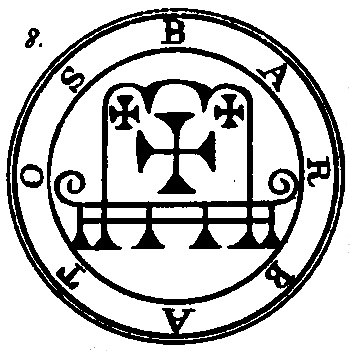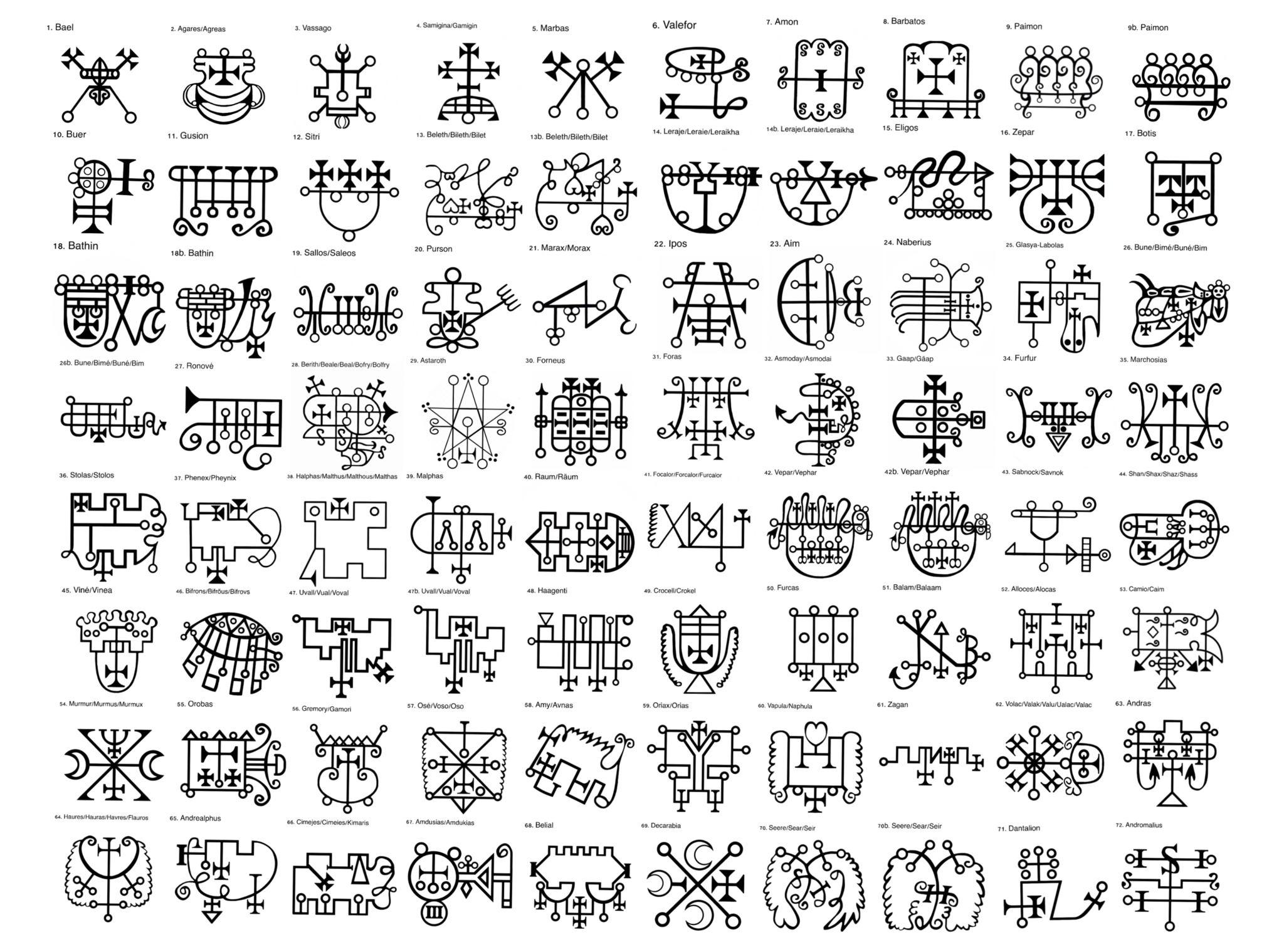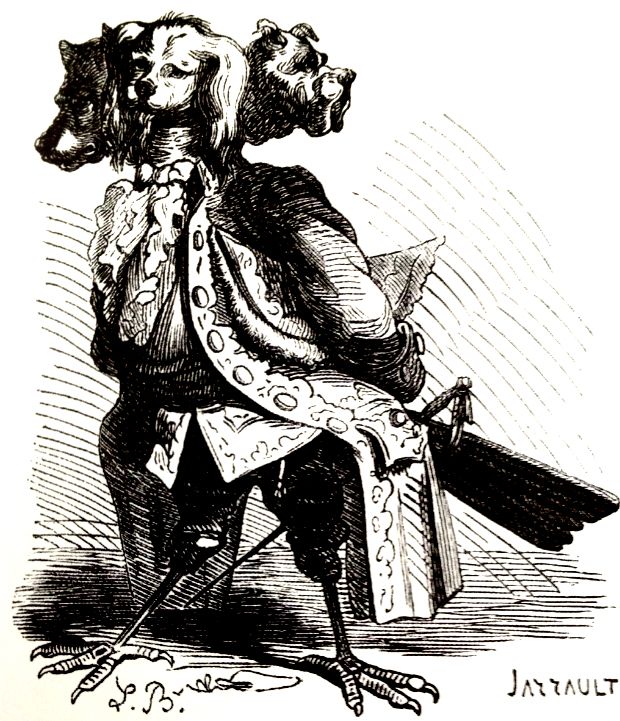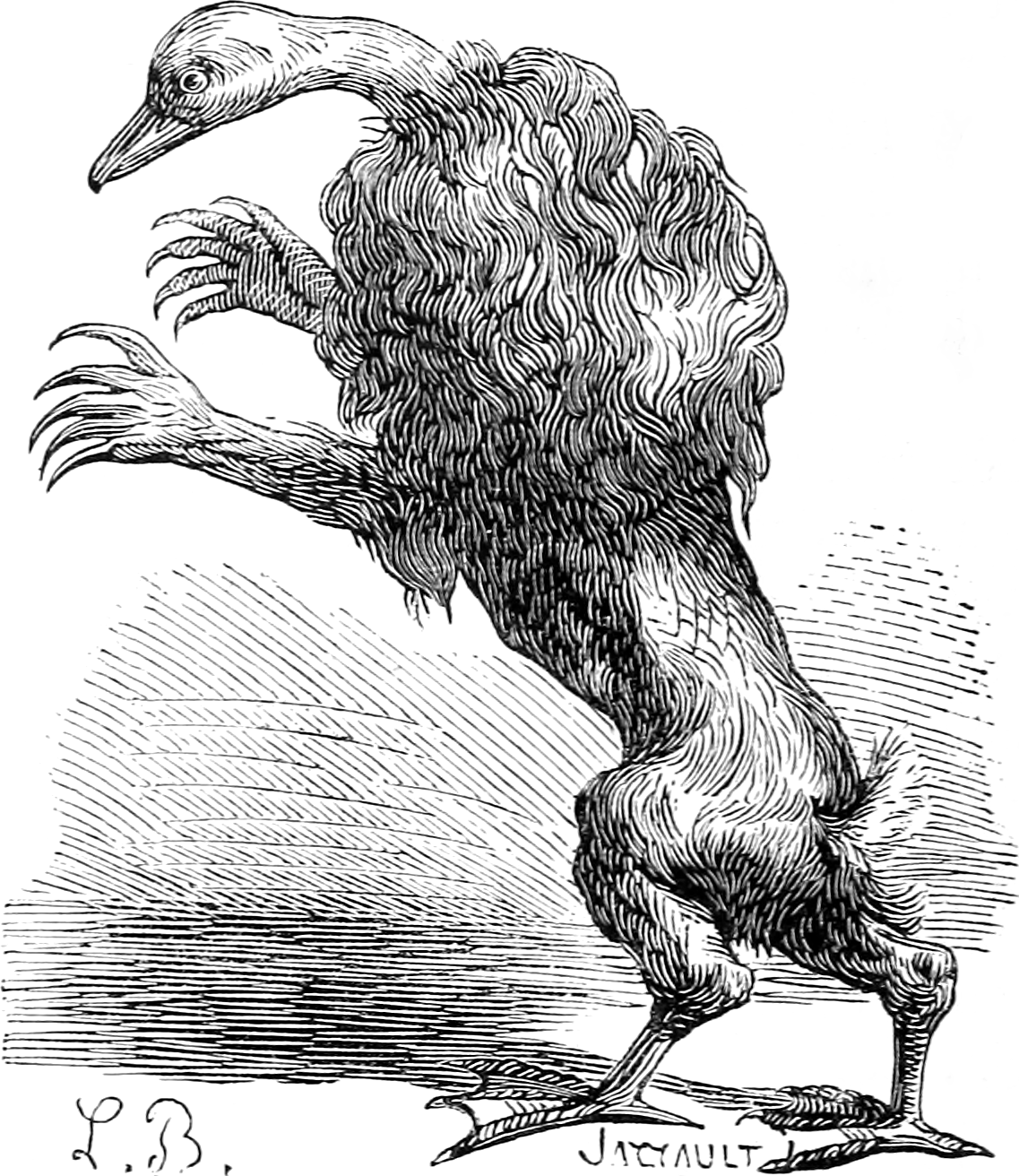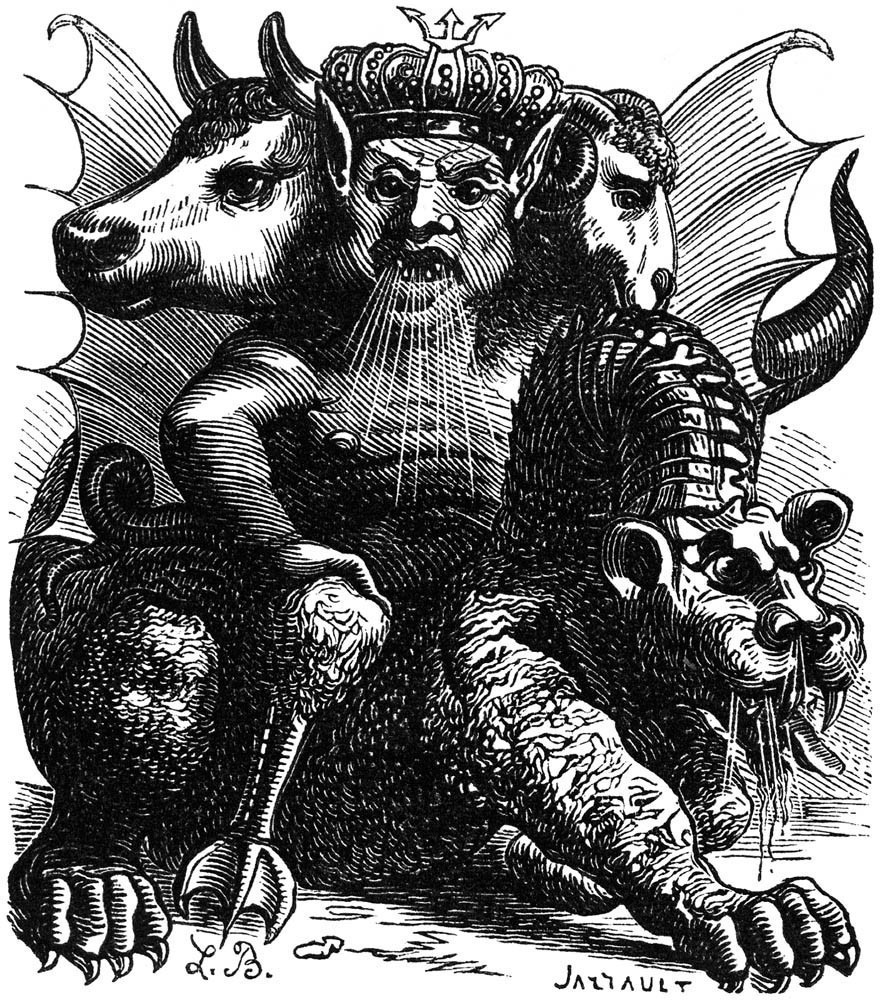|
Pseudomonarchia Daemonum
''Pseudomonarchia Daemonum'', or ''False Monarchy of Demons'', first appears as an Appendix to '' De praestigiis daemonum'' (1577) by Johann Weyer.Pseudomonarchia Daemonum (Liber officiorum spirituum); Johann Weyer, ed. Joseph Peterson; 2000. Available online aEsoteric Archives/ref> An abridgment of a grimoire similar in nature to the ''Ars Goetia'' (first book of ''The Lesser Key of Solomon''), it contains a list of demons, and the appropriate hours and rituals to conjure them. The ''Pseudomonarchia'' predates, and differs somewhat from, ''Ars Goetia''. The ''Pseudomonarchia'' lists sixty-nine demons (in contrast to the later seventy-two), and their sequence varies, along with some of their characteristics. The demon Pruflas appears only in ''Pseudomonarchia'',''The Lesser Key of Solomon'' add the demons Vassago, Seere, Dantalion, and Andromalius. and ''Pseudomonarchia'' does not attribute any sigils to the demons. Weyer referred to his source manuscript as ''Liber officiorum ... [...More Info...] [...Related Items...] OR: [Wikipedia] [Google] [Baidu] |
De Praestigiis Daemonum
''De praestigiis daemonum'', translated as ''On the Tricks of Demons'', is a book by medical doctor Johann Weyer, also known as Wier, first published in Basel in 1563. The book argues that witchcraft does not exist and that those who claim to practice it are suffering from delusions, which should be treated as mental illnesses, rather than punished as witchcraft.Stuart Clark, ''Thinking with demons: the idea of witchcraft in early modern Europe'' (Oxford University Press, 1999; ), pp198 - 202/ref> It was influential in the abolishment of witchcraft trials in the Netherlands. Synopsis Weyer disagreed with certain contemporaries about the justification of witch-hunting. Weyer believed that most, probably all, cases of alleged witchcraft resulted from delusions of the alleged witch, rather than actual, voluntary cooperation with spiritual evil. In brief, Weyer claimed that cases of alleged witchcraft were psychological rather than supernatural in origin. The book contains a famo ... [...More Info...] [...Related Items...] OR: [Wikipedia] [Google] [Baidu] |
Barbatos
Barbatos is the 8th spirit named among the list of 72 demons in ''The Lesser Key of Solomon''. According to grimoire tradition, he holds the rank of Duke, and (like the demon Buer) may appear when the sun is in the sign of Sagittarius. When summoned, he appears "with four noble kings and their companions in great troops". Barbatos grants the ability to understand the spoken language of animals, such as the singing of birds and the barking of dogs. He reveals hidden treasures that have been concealed by the enchantment of magicians, gives knowledge of past and future events, and reconciles disputes between friends and those who hold power. Barbatos has 30 legions of spirits under his command, and once belonged to the angelic order of Virtues.Peterson, Joseph H. (2001), ''The Lesser Key of Solomon'' (p. 10), Weiser Books, . In the '' Grand Grimoire'', Barbatos is named as the 6th of the 18 spirits who serve the seven superior spirits, namely, he is under the command of Satanachi ... [...More Info...] [...Related Items...] OR: [Wikipedia] [Google] [Baidu] |
Zepar
The demons' names (given below) are taken from the ''Ars Goetia'', which differs in terms of number and ranking from the ''Pseudomonarchia Daemonum'' of Johann Weyer. As a result of multiple translations, there are multiple spellings for some of the names, explained in more detail in the articles concerning them. The sole demon which appears in ''Pseudomonarchia Daemonum'' but not in the ''Ars Goetia'' is Pruflas. The 72 Angels of the Shem Hamephorash are considered the opposite and balancing force against these demons. Demons Kings # According to the Grand Grimoire, Baal (or Bael) is the head of the infernal powers. He is also the first demon listed in Wierus' ''Pseudomonarchia daemonum''. According to Wierus, Bael is the first king of Hell with estates in the east. He has three heads: a toad, a man, and a cat. He also speaks in a raucous, but well-formed voice, and commands 66 legions. Bael teaches the art of invisibility, and may be the equivalent of Baal or Baal ... [...More Info...] [...Related Items...] OR: [Wikipedia] [Google] [Baidu] |
Naberius
The demon Naberius was first mentioned by Johann Weyer in 1583. He is supposedly the most valiant Marquess of Hell, and has nineteen legions of demons under his command. He makes men cunning in all arts (and sciences, according to most authors), but especially in rhetoric, speaking with a hoarse voice. He also restores lost dignities and honors, although to Johann Weyer, he procures the loss of them. Description Naberius appears as a three-headed dog or a raven. He has a raucous voice, but presents himself as eloquent and amiable. He teaches the art of gracious living. He has also been depicted as a crow or a black crane. Concerning his name, it is unclear if there is an association with the Greek Cerberus. It is said that in 1583, Johann Weyer considers both of them to be the same demon. He claimed: Naberius aberus alias Cerberus, is a valiant marquesse, showing himself in the form of a crow, when he speaks with a hoarse voice: he makes a man amiable and cunning in all arts, ... [...More Info...] [...Related Items...] OR: [Wikipedia] [Google] [Baidu] |
Glasya Labolas
The demons' names (given below) are taken from the ''Ars Goetia'', which differs in terms of number and ranking from the ''Pseudomonarchia Daemonum'' of Johann Weyer. As a result of multiple translations, there are multiple spellings for some of the names, explained in more detail in the articles concerning them. The sole demon which appears in ''Pseudomonarchia Daemonum'' but not in the ''Ars Goetia'' is Pruflas. The 72 Angels of the Shem Hamephorash are considered the opposite and balancing force against these demons. Demons Kings # According to the Grand Grimoire, Baal (or Bael) is the head of the infernal powers. He is also the first demon listed in Wierus' ''Pseudomonarchia daemonum''. According to Wierus, Bael is the first king of Hell with estates in the east. He has three heads: a toad, a man, and a cat. He also speaks in a raucous, but well-formed voice, and commands 66 legions. Bael teaches the art of invisibility, and may be the equivalent of Baal or Baal ... [...More Info...] [...Related Items...] OR: [Wikipedia] [Google] [Baidu] |
Ipos
In demonology, Ipos is an Earl and powerful Prince of Hell (a Duke to some authors) who has thirty-six legions of demons under his command. He knows and can reveal all things, past, present and future (only the future to some authors, and past and future to others). He can make men witty and valiant. He is commonly depicted with the body of an angel with the head of a lion, the tail of a hare, and the feet of a goose, less frequently in the same shape but with the body of a lion, and rarely as a vulture. ''Other spellings'': Aiperos, Ayperos, Ayporos, Ipes. See also *The Lesser Key of Solomon ''The Lesser Key of Solomon'', also known as ''Lemegeton Clavicula Salomonis'' or simply ''Lemegeton'', is an anonymous grimoire on demonology. It was compiled in the mid-17th century, mostly from materials a couple of centuries older.''Lemegeto ... Sources *S. L. MacGregor Mathers, A. Crowley, '' The Goetia: The Lesser Key of Solomon the King'' (1904). 1995 reprint: . Goeti ... [...More Info...] [...Related Items...] OR: [Wikipedia] [Google] [Baidu] |
Morax (demon)
In demonology, Morax is a Demon, Great Earl, and President of Hell, having thirty (thirty-two, according to other authors) legions of demons under his command. He teaches Astronomy and all other liberal sciences, and gives good and wise familiars that know the virtues of all herbs and precious stones. This profile of the demon can be seen in Pseudomonarchia Daemonum (Johann Weyer, 1577) as well as in Goetia (S.L. MacGregor Mathers, 1904). He is depicted both as a man with the head of a bull, as well as a bull with the head of a man. It has been proposed that Morax is related to the Minotaur which Dante places in Hell (''Inferno'', Canto xii). See Fred Gettings, Dictionary of Demons (1988) His name seems to come from Latin 'morax': that which delays, that which stops. ''Other spellings'': Foraii, Marax, Farax. See also *The Lesser Key of Solomon *Pseudomonarchia Daemonum *Genshin Impact - "Morax" is the name of the Geo Archon (God of Stone) who rules over the nation Liyue So ... [...More Info...] [...Related Items...] OR: [Wikipedia] [Google] [Baidu] |
Valefar
In demonology, Valefar (also Valefor, Malaphar, Malephar, Valafar) is a Duke of Hell. He tempts people to steal and is in charge of a good relationship among thieves. Valefar is considered a good familiar by his associates "till they are caught in the trap".Waite (1913), ''The Book of Ceremonial Magic''footnote #7/ref> He commands ten legions of demons.Mathers, S. L. MacGregor; Crowley, Aleister (Editors - 1904), ''The Lesser Key of Solomon'',Goetia: Shemhamphorash, p. 23, asacred-texts.com/ref> He is represented as a lion with the head of a man, or as a lion with the head of a donkey. See also * The Lesser Key of Solomon ''The Lesser Key of Solomon'', also known as ''Lemegeton Clavicula Salomonis'' or simply ''Lemegeton'', is an anonymous grimoire on demonology. It was compiled in the mid-17th century, mostly from materials a couple of centuries older.''Lemegeto ... References Sources * S. L. MacGregor Mathers, A. Crowley, '' The Goetia: The Lesser Key of Solomon the King' ... [...More Info...] [...Related Items...] OR: [Wikipedia] [Google] [Baidu] |
Leraje
Leraje (also ''Leraye'', ''Leriac'', ''Loray'', ''Oray'', or ''Zoray'') is a demon mentioned in demonological grimoires. He appears in the ''Lesser Key of Solomon'', Johann Weyer's ''Pseudomonarchia Daemonum'', and Jacques Collin de Plancy's ''Dictionnaire Infernal''. Description Leraye is described as an archer who starts battles and putrefies arrow-wounds. The ''Lesser Key'' additionally notes that he wears green while Weyer (and so De Plancy) attribute him with the power of driving away mobs. Legions and standing Leraye is the fourteenth spirit in the Lesser Key of Solomon (in some versions as Leraje, and in Rudd's variant as Leriac), the thirteenth spirit in the Pseudomonarchia Daemonum (as Loray or Oray), and appears as Oray in the Dictionnaire Infernal. In the Grand Grimoire, Leraye (as Loray or Zoray) is listed as a subordinate of Sargatanas. All other sources claim he rules 30 legions of spirits. According to Rudd, Leraje is opposed by the Shemhamphorasch ''S ... [...More Info...] [...Related Items...] OR: [Wikipedia] [Google] [Baidu] |
Eligos
The demons' names (given below) are taken from the ''Ars Goetia'', which differs in terms of number and ranking from the ''Pseudomonarchia Daemonum'' of Johann Weyer. As a result of multiple translations, there are multiple spellings for some of the names, explained in more detail in the articles concerning them. The sole demon which appears in ''Pseudomonarchia Daemonum'' but not in the ''Ars Goetia'' is Pruflas. The 72 Angels of the Shem Hamephorash are considered the opposite and balancing force against these demons. Demons Kings # According to the Grand Grimoire, Baal (or Bael) is the head of the infernal powers. He is also the first demon listed in Wierus' ''Pseudomonarchia daemonum''. According to Wierus, Bael is the first king of Hell with estates in the east. He has three heads: a toad, a man, and a cat. He also speaks in a raucous, but well-formed voice, and commands 66 legions. Bael teaches the art of invisibility, and may be the equivalent of Baal or Baal ... [...More Info...] [...Related Items...] OR: [Wikipedia] [Google] [Baidu] |
Purson
The demons' names (given below) are taken from the ''Ars Goetia'', which differs in terms of number and ranking from the ''Pseudomonarchia Daemonum'' of Johann Weyer. As a result of multiple translations, there are multiple spellings for some of the names, explained in more detail in the articles concerning them. The sole demon which appears in ''Pseudomonarchia Daemonum'' but not in the ''Ars Goetia'' is Pruflas. The 72 Angels of the Shem Hamephorash are considered the opposite and balancing force against these demons. Demons Kings # According to the Grand Grimoire, Baal (or Bael) is the head of the infernal powers. He is also the first demon listed in Wierus' ''Pseudomonarchia daemonum''. According to Wierus, Bael is the first king of Hell with estates in the east. He has three heads: a toad, a man, and a cat. He also speaks in a raucous, but well-formed voice, and commands 66 legions. Bael teaches the art of invisibility, and may be the equivalent of Baal or Baal ... [...More Info...] [...Related Items...] OR: [Wikipedia] [Google] [Baidu] |
Bathin
Bathin (also ''Bathym'', ''Mathim'', or ''Marthim'') is a demon described in demonological grimoires. Variations He is ranked as a duke in the ''Lesser Key of Solomon'' (as the eighteenth spirit) and Johann Weyer's ''Pseudomonarchia Daemonum'' (as the tenth spirit), where he is described as a serpent-tailed and muscular man riding a pale horse, who knows the properties of plants and stones, transports people across countries, and rules 30 legions of demons. He also appears in the Livre des Esperitz, as "Machin," without the horse but ruling 37 legions of demons. The German edition of ''The Grimoire of Pope Honorius'' describes Bathin (again by the name Machin) as teaching about and providing foreign plants and rocks. In the ''Grand Grimoire'', he (as Bathsin or Bathim) is listed as a subordinate of Fleurety. According to Rudd, Bathin is opposed by the Shemhamphorasch ''Shem HaMephorash'' ( he, שֵׁם הַמְּפֹרָשׁ ''Šēm hamMəfōrāš'', also ''Shem ha-Mephor ... [...More Info...] [...Related Items...] OR: [Wikipedia] [Google] [Baidu] |
